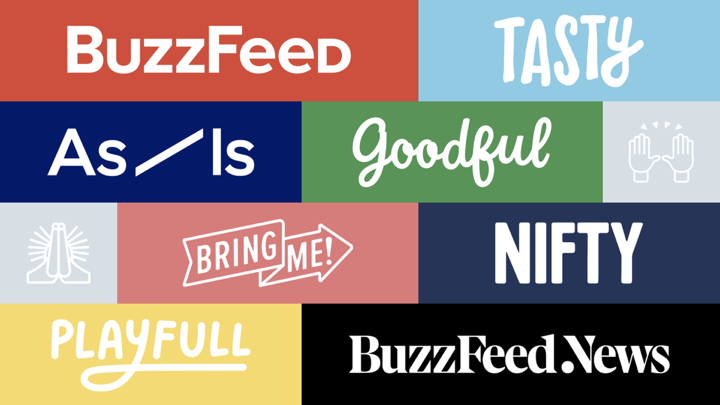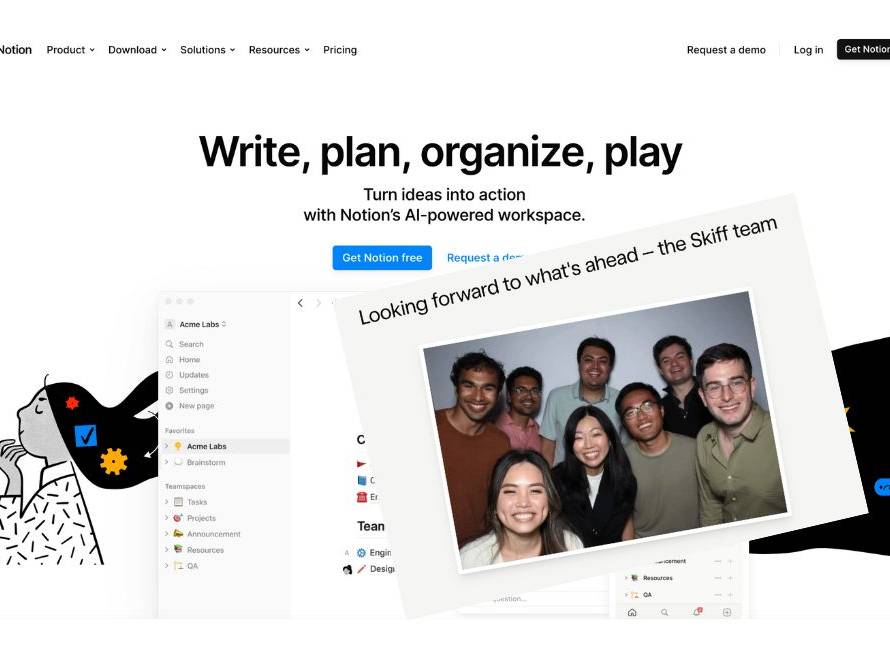In a bold move that has sent shockwaves through the digital media industry, BuzzFeed CEO Jonah Peretti has unveiled his vision to transform the company into an AI-driven technology and media powerhouse. This pivot, outlined in Peretti’s recent annual letter to shareholders, represents a significant strategic shift for the once social media-dependent publisher. The focus for social platforms have been on incentiving creators who are a cheap or free source of content, leaving media companies as an after thought as part of the media ecosystem.
Are Media Publishers Pivoting Into Tech Companies To Survive?
The “endless scroll” that social platforms promote might seem to reward quantity over quality content, which media publishers say needs to stay relevant in today’s media environment. If quality content is what media publishers like BuzzFeed claim their value is at, then can they survive by leaning on their content to curate their own GenAI chatbot? After all, this is the future of search that tech companies are racing to excel at.
The Decline of Referral Traffic: A Force for Change
BuzzFeed’s transformation is the stark reality of declining referral traffic, particularly from the once-dominant Facebook. Peretti’s memo reveals that Facebook-referred traffic to BuzzFeed has plummeted by a staggering 74% since 2020, while the company’s direct traffic has grown by 12% over the same period. This shift has forced BuzzFeed to become the primary driver of its own audience, a challenging transition for a business model heavily reliant on external platforms.
Accepting the AI Revolution
Faced with these audience challenges, Peretti has boldly declared BuzzFeed’s intention to become an AI-driven media and tech company. The CEO envisions a future where the company leverages the power of generative AI to create a new medium that is “so responsive and dynamic” that BuzzFeed’s content and platform will feel “almost alive.”
Peretti’s vision goes beyond the creation of static articles, as he dismisses such approaches as “boring.” Instead, he champions the use of AI to unlock new forms of storytelling, build interactive experiences, and enhance community engagement through personalized and evolving content.
By developing AI-driven chatbots, personalized content generators, and dynamic multimedia formats, BuzzFeed aims to create a more immersive and engaging user experience that keeps audiences coming back. The company’s early experiments with AI-powered content modules have already yielded promising results, with a 24% boost in pageviews. BuzzFeed wants to keep users captivated and returning to its owned and operated platforms, rather than relying on the whims of external platforms. This strategy seeks to make BuzzFeed the primary traffic referrer for its own content, reducing its vulnerability to platform algorithm changes.

The Rise of Chatbots and Conversational Media
One of the key challenges facing BuzzFeed is striking the right balance between its identity as a media company and its aspirations as a technology-driven enterprise. At the heart of BuzzFeed’s AI-powered pivot is the company’s focus on chatbots and conversational media. Peretti believes these AI-driven formats hold the key to unlocking new levels of audience engagement and time spent on the platform, a crucial metric for ad-supported digital publishers.
If blessed by the powers of generative AI, BuzzFeed aims to create a “reimagined” web and app experience that blurs the lines between content and interaction. This vision encompasses the development of hyper-personalized content, custom-generated experiences, and even AI-powered assistants that can cater to the unique preferences and needs of each user.
BuzzFeed aims to create a “reimagined” web and app experience that blurs the lines between content and interaction.
Empowering Creators with AI-Driven Tools
Beyond enhancing the user experience, BuzzFeed also sees the integration of AI as a means to empower its own creative teams and content creators. By providing them with AI-powered tools and capabilities, the company aims to help its creators unlock new possibilities for storytelling, experimentation, and content generation.
This could include the use of AI-driven ideation platforms, automated content production workflows, and even generative AI systems that can assist in the creation of unique, personalized content at scale. By equipping its creators with these transformative technologies, BuzzFeed hopes to drive innovation and foster a more dynamic, responsive, and adaptable approach to digital media.
Challenges Abound for Legacy Publishers
Peretti’s ambitious plan to transform BuzzFeed into an AI media and tech company is not without its share of skepticism and challenges. To some, this “pivot to AI” bears a striking resemblance to the much-maligned “pivot to video” strategy of previous years, which failed to deliver the promised business outcomes for many publishers.
The ongoing power dynamic and imbalance between publishers and tech platforms has long plagued the media industry. Peretti’s lament that platforms are not doing enough to support quality publishers underscores the continued vulnerability of legacy digital publishers in the face of platform dominance.
The Roadmap for Responsible and Transparent AI Integration
Some of the key steps BuzzFeed, or any other media publisher, can take to ensure its AI integration aligns with principles of ethical and accountable content creation include:
Establish an AI Ethics Board
At the foundation of BuzzFeed’s AI governance efforts should be the creation of a dedicated AI Ethics Board. This cross-functional team, comprising experts in fields such as AI, technology, ethics, and journalism, would be tasked with developing comprehensive guidelines and policies to govern the use of AI within the company’s content creation and distribution processes.
The AI Ethics Board would be responsible for addressing critical issues such as algorithmic bias, privacy protection, transparency, and the potential societal impacts of BuzzFeed’s AI-powered content and experiences. Their guidance would help ensure that the company’s AI integration remains firmly grounded in principles of responsible innovation.
Implement Rigorous AI Auditing and Monitoring
To continuously validate the integrity and trustworthiness of its AI-powered content, BuzzFeed should implement robust auditing and monitoring protocols. This could include the use of AI-driven tools to analyze the output of the company’s generative AI systems, flagging any potential inconsistencies, inaccuracies, or biases.
Furthermore, BuzzFeed should establish clear processes for regularly reviewing the performance and impact of its AI-powered content, gathering feedback from both internal stakeholders and external users. This data-driven approach would allow the company to identify and address any issues in a timely manner, ensuring the ongoing reliability and transparency of its AI integration.
Promote Transparency Through Labeling and Explainability
A critical aspect of BuzzFeed’s responsible AI strategy should be a commitment to transparency. The company should clearly label any content that has been generated, augmented, or influenced by AI systems, providing users with a clear understanding of the role these technologies have played in the creative process.
Moreover, BuzzFeed should strive to enhance the explainability of its AI-powered content, offering users insight into the underlying algorithms, data sources, and decision-making processes that have shaped the final output. This level of transparency can help build trust and empower users to make informed judgments about the reliability and accuracy of the information they are consuming.
Empower Users with Feedback and Fact-Checking Mechanisms
To further reinforce trust and accountability, BuzzFeed should explore ways to incorporate user feedback and fact-checking mechanisms into its AI-powered content and experiences. This could involve allowing users to flag potential inaccuracies or inconsistencies, which would then trigger additional editorial review and verification.
Invest in AI Literacy and Awareness
Any responsible media company should also invest in educating its internal teams and external stakeholders on the capabilities, limitations, and ethical considerations of these transformative technologies. This could include the implementation of comprehensive training programs, the development of AI literacy resources, and the fostering of ongoing dialogues around the responsible use of AI in the media industry.
The Path Forward: Balancing Media and Tech Identities
As BuzzFeed navigates this pivotal moment, the company must grapple with the delicate balance between its identity as a media company and its aspirations as a technology-driven enterprise. Peretti’s vision to leverage AI and “tech thinking” to drive BuzzFeed’s growth and impact is not without merit. However, the success of this pivot will hinge on the company’s ability to seamlessly integrate cutting-edge technology with its core media expertise, creating a truly innovative and sustainable business model that can withstand the ever-changing tides of the digital landscape.
As the digital media industry continues to evolve, BuzzFeed’s bold pivot to AI-powered conversational content and experiences will undoubtedly be watched closely by its peers and the broader industry. The coming years will serve as a crucial test for Peretti’s ambitious plan, as he seeks to transform BuzzFeed into the “defining media company for the AI era.”
ZMSEND.com is a technology consultancy firm for design and custom code projects, with fixed monthly plans and 24/7 worldwide support.


